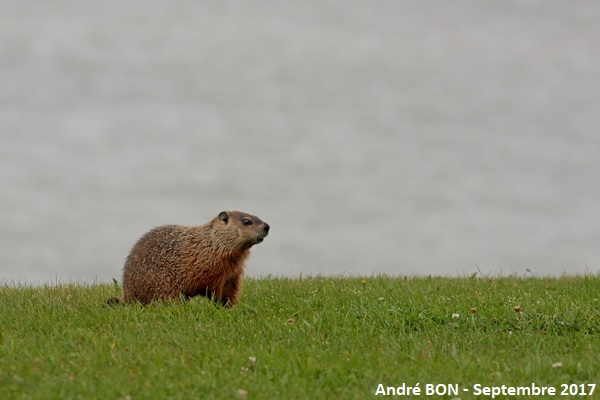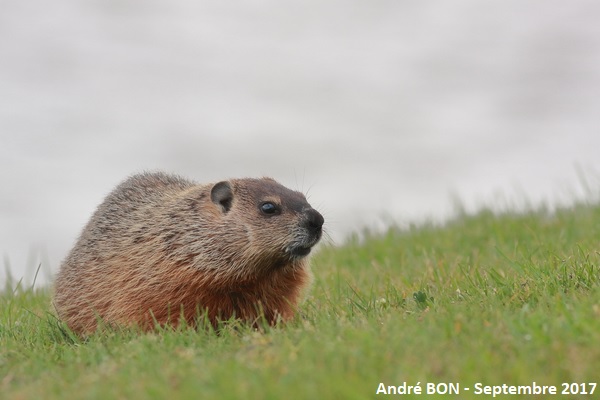

| Groundhog (Marmota monax (Linnaeus, 1758)) |


|
|
Scientific name: Marmota monax (Linnaeus, 1758) Common name: Groundhog French name: Marmotte américaine, Marmotte commune, Siffleux. Family: Sciuridae Size: Body size: 40 to 65 cm; Weight: 2 to 4 kg. Biotope: Open countryside, groves, forest edges at low altitude. Food: Plants, herbs, leaves and flowers. Longevity : 4 to 6 years (up to 14 years in captivity). Geographic area: North America, Alaska and Canada except extreme north, eastern United States south to Mississippi and Alabama. |
Groundhogs have two layers of brown-grey coloured fur. The body has a rounded shape with short legs ending with curved claws well suited for digging the ground. The head is flat with a prominent nose and small round ears. This marmot species , of diurnal activity, is rather solitary. It digs large burrows to protect itself from predators, raise the young and hibernate during the cold season. The strident whistles emitted by the Groundhogs are at the origin of their French name of "Siffleux". Males join females at the end of winter and leave the burrow a little before the end of the gestation period. There is usually a litter of 2 to 6 young per year which are born about early May. The young disperse in August. |
| [To know more about the Groundhog] [Next picture] [Top] |

|
What a surprise to see a marmot on the lawn of the hotel. We are more used to seeing these animals in the mountains in France. |
| [To know more about the Groundhog] [Previous picture] [Top] |

|
This marmot was not shy at all and I was able to approach quite easily. |